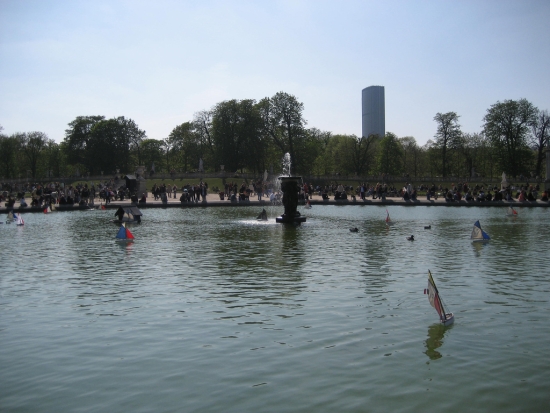A Paris heritage group is opposing plans to erect a series of skyscrapers that city hall believes are essential in order to compete with international capitals like London.

The Tour Montparnasse from the Jardin du Luxembourg
SOS Paris, which has been defending the urban environment since the construction of the 50 storey Tour Montparnasse in 1973, calls this type of building “rupture architecture” and argues that it makes no attempt to fit in with its surroundings.
Following the outcry surrounding the Tour Montparnasse, Paris planners banned any new buildings over seven storeys high. This ban has recently been overturned allowing the construction of tall buildings anywhere except in the city centre and plans are already afoot for 12 new developments.
Jerome Coumet, the mayor of the 13th Arrondissement, is one of the advocates of the skyscraper proposals. His constituency, which includes the business district of Paris Rive Gauche, is one of the areas earmarked for development and he believes that it is about time that French architects were free to express themselves in the capital.
“A city is something that constantly renews itself. Paris attracts more tourists than any other city in the world.
“I’m convinced that, just as people go to visit the new parts of London, people will come to see extraordinary new architecture in Paris,” he told the BBC.
In the Batignolles quarter, a vast site of derelict railway land has already been cleared for another of the projects. Here, a 524 ft steel and glass building by The Shard architect Renzo Piano will house new law courts which are due to be completed in 2017. It is Piano’s largest project in the city since the opening of the Centre Georges Pompidou nearly 40 years ago.
City hall is keen to stress that Paris is not about to become a European Dubai but it must be able to offer modern office space. They highlight the fact that the new height limit of 590 ft is far lower than that of the Eiffel Tower which stands at 1062 ft.
Despite this reassurance SOS Paris, which opposes “architecturally massive real estate projects,” remains unconvinced that the new developments will not be harmful to the urban environment.
SOS president Olivier de Monicault says; “Usually the architect makes a project, then he tries to sell it in any place in the world.
“The architect wants to become famous with his building and so he thinks he makes something very strange, very different from the place where’s he’s building it.”
Other critics use economic arguments to oppose the new buildings, citing the cost of construction and maintenance as reason enough to abandon the idea. And next year the controversy is likely to be extended to the political arena.
In March Socialist Party candidate Anne Delanoe will contest the city mayoral elections and her likely opponent is the conservative Nathalie Kosciusko-Morizet.
Mme Delanoe recently told the magazine L’Express that Paris mustn’t let itself become “imprisoned by a heritage vision of the city.”
Mme Kosciusko-Morizet, on the other hand, argues against disfiguring the city with isolated tower blocks that do nothing to embellish it.
Previous Post
Bookmaker Wins Landmark Case against Council